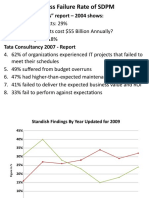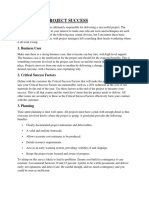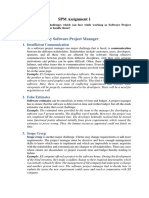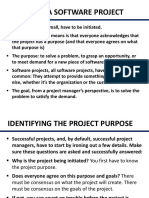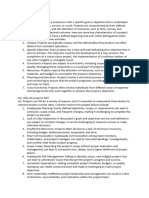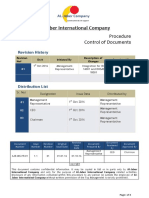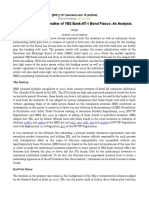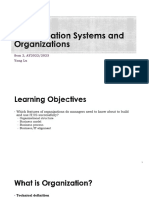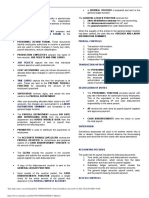0% found this document useful (0 votes)
50 views5 pages7th Sem Software Project Mgmt
The document discusses the Standish Group report on IT project success rates. It notes that according to the report, 31% of projects are completed on time and on budget, making them successful. 50% of projects are challenged, facing issues like delays or budget overruns. The remaining 19% of projects fail and are cancelled before completion. The document then lists various factors that can contribute to projects being challenged or failing, such as unclear requirements or unrealistic timelines, as well as recommendations from experts on how to control these risks and improve success rates.
Uploaded by
Mirza HammadCopyright
© © All Rights Reserved
We take content rights seriously. If you suspect this is your content, claim it here.
Available Formats
Download as PDF, TXT or read online on Scribd
0% found this document useful (0 votes)
50 views5 pages7th Sem Software Project Mgmt
The document discusses the Standish Group report on IT project success rates. It notes that according to the report, 31% of projects are completed on time and on budget, making them successful. 50% of projects are challenged, facing issues like delays or budget overruns. The remaining 19% of projects fail and are cancelled before completion. The document then lists various factors that can contribute to projects being challenged or failing, such as unclear requirements or unrealistic timelines, as well as recommendations from experts on how to control these risks and improve success rates.
Uploaded by
Mirza HammadCopyright
© © All Rights Reserved
We take content rights seriously. If you suspect this is your content, claim it here.
Available Formats
Download as PDF, TXT or read online on Scribd
/ 5

